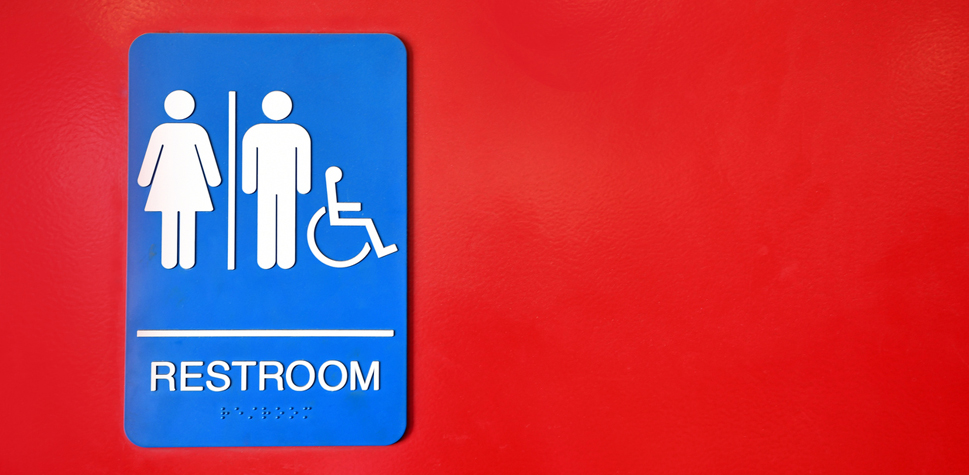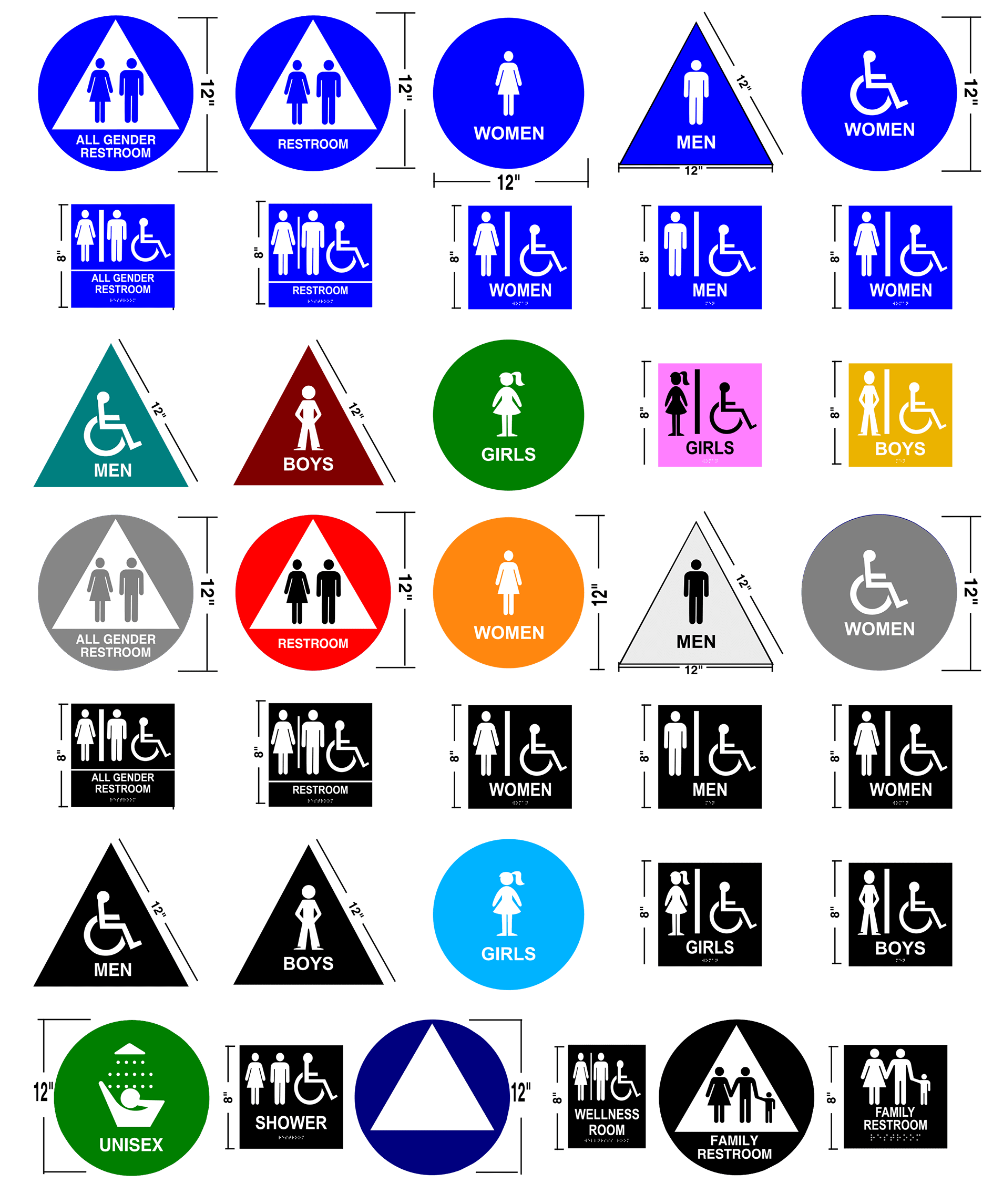Tailoring ADA Signs to Meet Your Details Needs
Wiki Article
Discovering the Trick Attributes of ADA Signs for Improved Ease Of Access
In the realm of access, ADA indications serve as silent yet effective allies, guaranteeing that rooms are navigable and comprehensive for individuals with specials needs. By incorporating Braille and responsive aspects, these indications damage obstacles for the visually impaired, while high-contrast shade schemes and clear typefaces cater to varied aesthetic needs.Significance of ADA Conformity
Guaranteeing conformity with the Americans with Disabilities Act (ADA) is essential for promoting inclusivity and equivalent gain access to in public rooms and workplaces. The ADA, established in 1990, mandates that all public facilities, employers, and transport solutions accommodate individuals with handicaps, guaranteeing they enjoy the exact same legal rights and possibilities as others. Conformity with ADA requirements not just meets lawful obligations but additionally enhances an organization's credibility by demonstrating its commitment to variety and inclusivity.One of the crucial facets of ADA compliance is the implementation of obtainable signs. ADA indications are designed to ensure that people with specials needs can quickly browse with buildings and spaces.
Moreover, adhering to ADA guidelines can reduce the threat of possible fines and legal repercussions. Organizations that stop working to abide by ADA guidelines may face claims or penalties, which can be both damaging and economically burdensome to their public picture. Thus, ADA conformity is integral to cultivating an equitable atmosphere for every person.
Braille and Tactile Components
The incorporation of Braille and responsive elements into ADA signs embodies the concepts of ease of access and inclusivity. These attributes are essential for people who are visually impaired or blind, allowing them to browse public areas with greater self-reliance and self-confidence. Braille, a responsive writing system, is vital in offering written information in a style that can be conveniently perceived with touch. It is generally put under the corresponding text on signs to guarantee that individuals can access the details without aesthetic assistance.Tactile aspects expand past Braille and consist of increased characters and signs. These components are designed to be noticeable by touch, permitting individuals to recognize space numbers, bathrooms, departures, and other crucial locations. The ADA establishes particular guidelines regarding the dimension, spacing, and placement of these responsive aspects to maximize readability and make certain uniformity throughout various atmospheres.

High-Contrast Color Design
High-contrast color systems play a critical duty in boosting the presence and readability of ADA signs for individuals with visual problems. These plans are vital as they take full advantage of the difference in light reflectance in between message and background, ensuring that indications are conveniently noticeable, even from a range. The Americans with Disabilities Act (ADA) mandates the use of specific color contrasts to suit those with restricted vision, making it a crucial facet of compliance.The effectiveness of high-contrast colors depends on their capacity to stick out in numerous illumination problems, consisting of dimly lit atmospheres and areas with glare. Commonly, dark text on a light history or light message on a dark history is utilized to attain optimal contrast. For example, black text on a yellow or white background supplies a raw visual difference that helps in fast acknowledgment and comprehension.

Legible Fonts and Text Size
When taking into consideration the layout of ADA signs, the option of clear fonts and appropriate text size can not be overstated. The Americans with Disabilities Act (ADA) mandates that fonts have to be not italic and sans-serif, oblique, manuscript, highly decorative, or of uncommon type.According to ADA standards, the minimum message height need to be 5/8 inch, and it ought to increase proportionally with watching distance. Uniformity in text dimension adds to a natural aesthetic experience, helping people in navigating settings efficiently.
In addition, advice spacing between lines and letters is essential to readability. Sufficient spacing stops characters from showing up crowded, boosting readability. By adhering to these criteria, designers can significantly boost ease of access, making certain that signage serves its desired purpose for all individuals, no matter their aesthetic capabilities.
Efficient Placement Methods
Strategic positioning of ADA signs is crucial for making the most of ease of access and making sure conformity with lawful requirements. ADA guidelines stipulate that signs should be mounted at an elevation in between 48 to 60 inches from the ground to ensure they are within the line of sight for both standing and seated people.In addition, indications should be placed adjacent to the lock side of doors to enable easy identification before entrance. This positioning assists people find rooms and rooms without blockage. In situations where there is no door, indications should be positioned on the nearby nearby wall surface. Uniformity in indication placement throughout a center enhances predictability, reducing complication and enhancing overall customer experience.

Final Thought
ADA indicators play an essential function in promoting access by integrating attributes that address the requirements of people with disabilities. Including Braille and tactile elements guarantees essential information comes to the aesthetically impaired, while high-contrast shade systems and legible sans-serif font styles improve presence across different lights problems. Reliable positioning strategies, such as suitable placing elevations and strategic locations, even more help with navigation. These aspects jointly cultivate a comprehensive environment, underscoring the importance of ADA compliance in making certain equal access for all.In the world of access, ADA indications serve as silent yet effective allies, making certain that rooms are inclusive and navigable for people with why not try this out handicaps. The ADA, established in 1990, mandates that all public facilities, companies, and transportation services suit people with impairments, ensuring they appreciate the very same legal rights and opportunities as others. ADA Signs. ADA indicators are developed to make sure that individuals with disabilities can conveniently navigate via structures and areas. ADA guidelines stipulate that indicators ought to be placed at an elevation between 48 to 60 inches from the ground to ensure they are within the line of sight for both standing and seated people.ADA indications play an essential function in promoting access by integrating functions that resolve the demands of individuals with handicaps
Report this wiki page